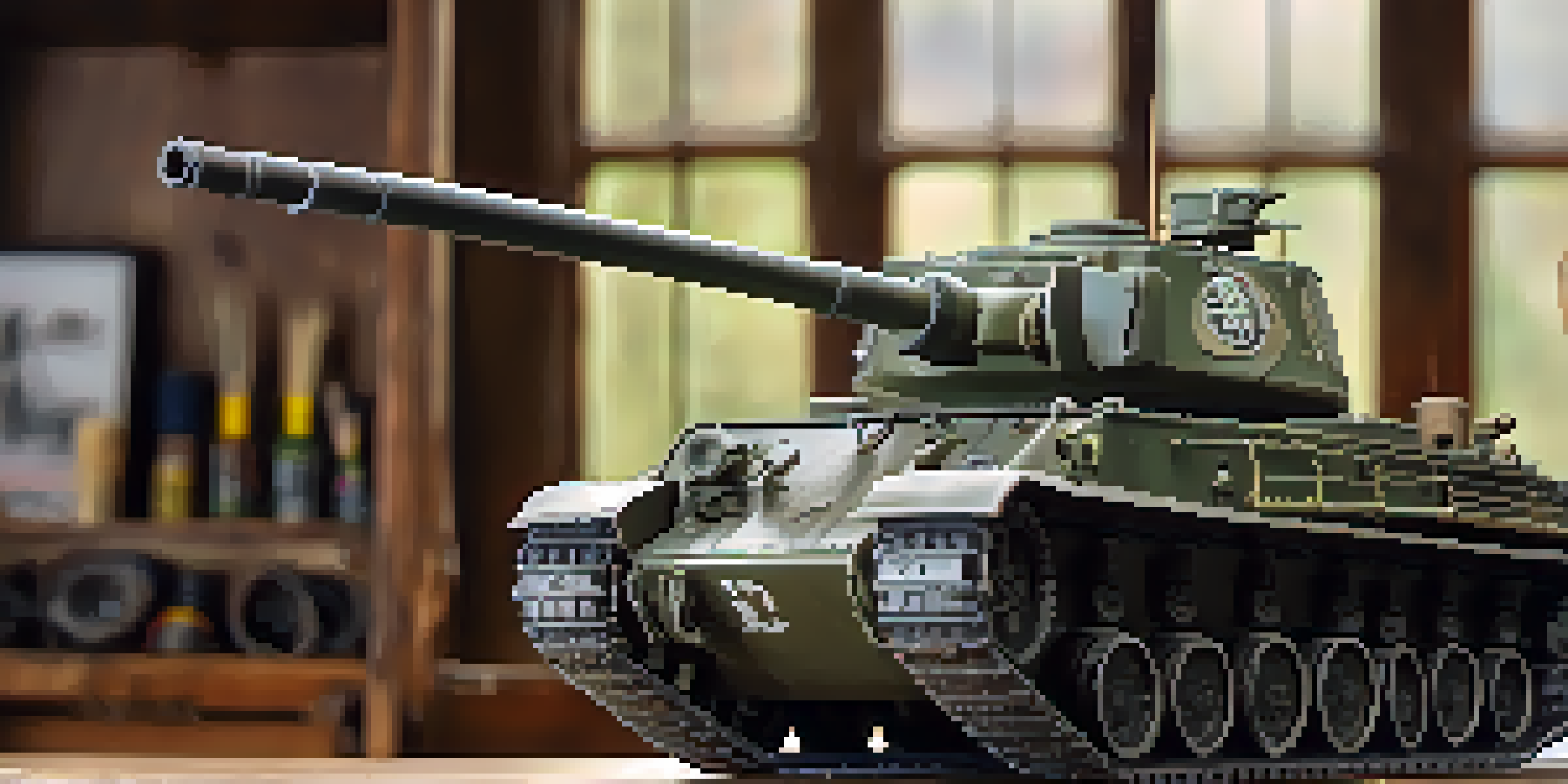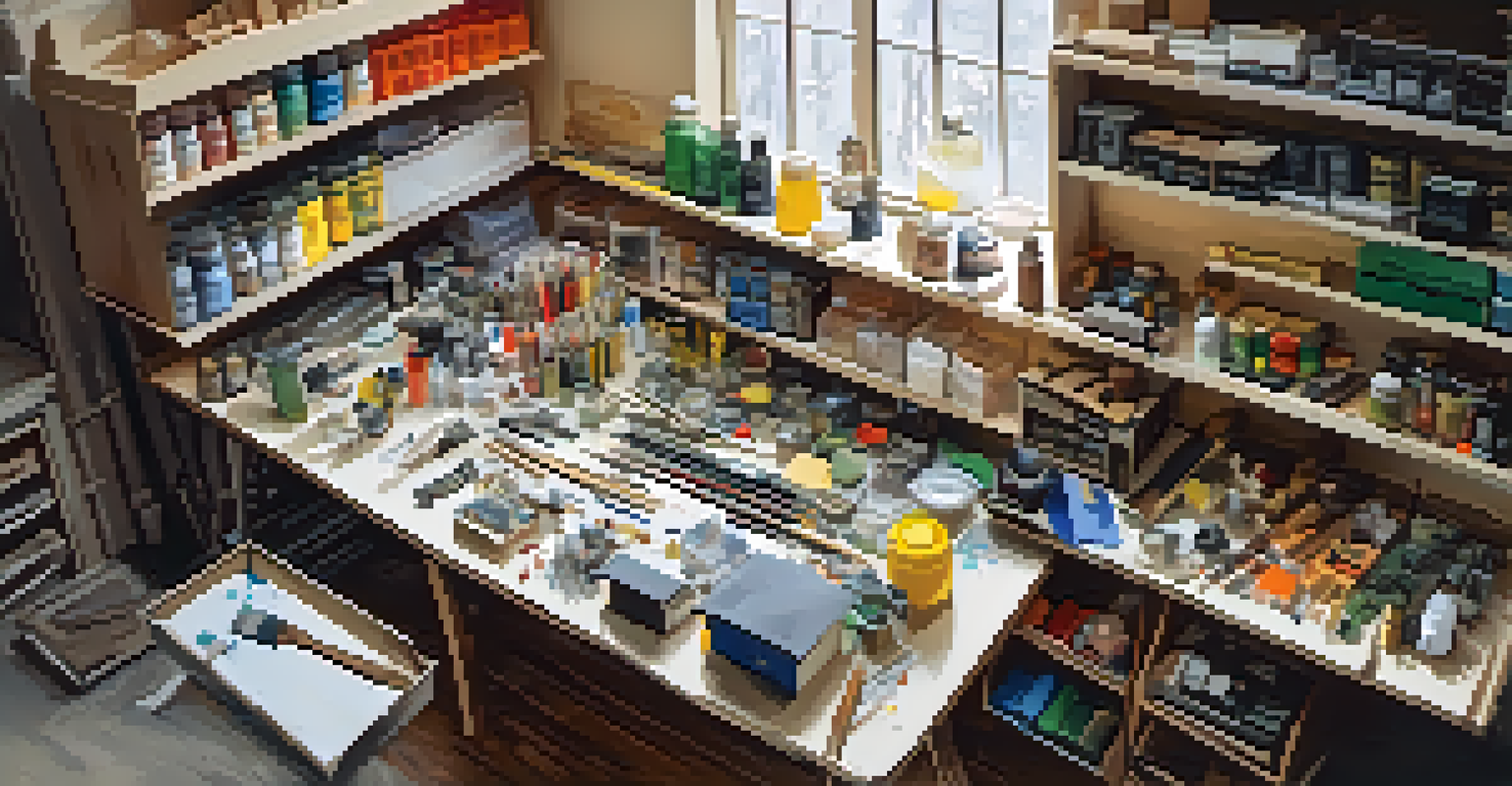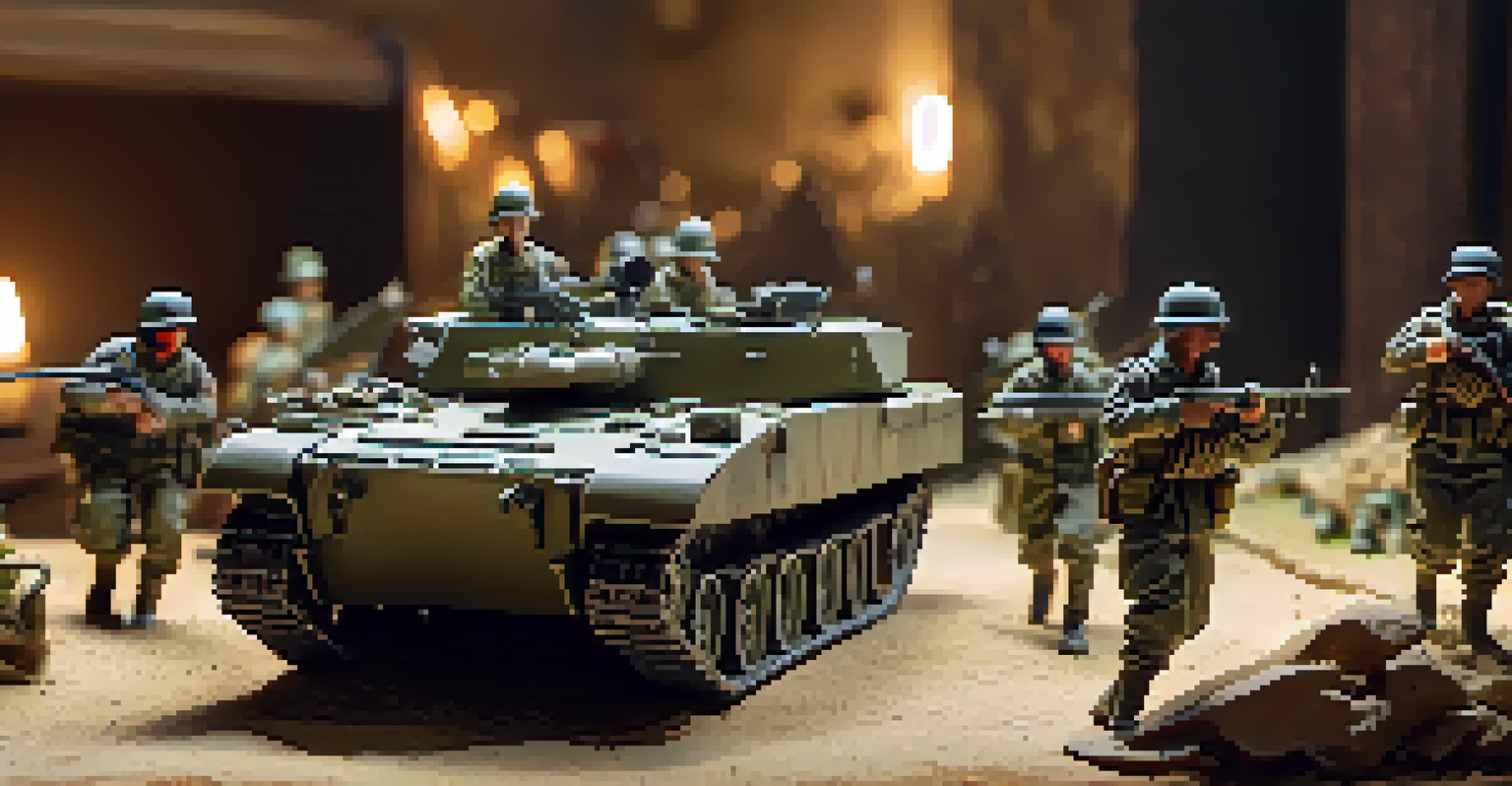Exploring the World of Military Scale Model Kits

Understanding Military Scale Model Kits: A Brief Overview
Military scale model kits are miniature replicas of military vehicles, aircraft, and ships. They come in various scales, which indicate the ratio of the model to the real-life counterpart. For instance, a 1:35 scale tank would be 35 times smaller than its actual size. This hobby has attracted enthusiasts for decades, as it combines history, craftsmanship, and creativity.
The best way to predict the future is to create it.
These kits vary in complexity, from simple snap-together models for beginners to intricate kits requiring advanced skills and tools. Each kit typically includes plastic parts, decals, and instructions, allowing hobbyists to recreate their favorite military machines accurately. Whether you're a novice or an experienced builder, there's a kit out there that will suit your skill level.
The beauty of military scale modeling lies not only in the final product but also in the process of building it. Each step, from assembling the parts to painting and weathering, offers a chance to learn and refine your techniques. As you immerse yourself in this world, you'll find that every model tells a story of engineering and history.
Choosing the Right Scale: Finding Your Fit
When starting in military scale modeling, one of the first decisions you'll face is selecting the right scale. Common scales include 1:72, 1:48, and 1:35, each offering a unique balance between detail and size. For instance, 1:72 scale models are smaller and may require less space, making them ideal for those with limited display areas.

On the other hand, larger scales like 1:35 provide more detail, allowing for an intricate build and paint job. This scale is favored by many serious hobbyists who enjoy showcasing their craftsmanship. However, it’s essential to consider your personal preferences and the space you have available when making your choice.
Choosing the Right Scale Matters
Selecting the appropriate scale for your military model affects both the level of detail and the space required for display.
Ultimately, the best scale for you depends on what you hope to achieve with your modeling experience. Whether you want a collection that’s easy to display or models that showcase your skills in detail, there's a scale that perfectly aligns with your vision.
Essential Tools and Materials for Model Building
Before diving into your first military scale model, it’s vital to gather the right tools and materials. A basic toolkit usually includes a hobby knife, tweezers, cutting mat, and various glues. These tools will help you assemble the parts with precision and care, ensuring a sturdy final product.
Creativity is intelligence having fun.
Additionally, investing in quality paints and brushes will elevate your model's appearance. Acrylic paints are a popular choice due to their ease of use and quick drying times. You can also explore airbrush techniques for a professional finish, which can add depth and realism to your model.
Don’t forget about weathering supplies! Techniques like dry brushing and washes can give your model an authentic, battle-worn look. By using the right tools and materials, you set the stage for a successful and enjoyable building experience.
The Joy of Building: Tips for Beginners
Starting your journey in military scale modeling can be both exciting and daunting. A good tip for beginners is to begin with simpler kits that match your skill level. This way, you can gradually build confidence and refine your techniques without feeling overwhelmed.
Take your time with each step, whether it’s cutting out parts or applying paint. Rushing can lead to mistakes, so patience is key. It’s also helpful to join local clubs or online forums, where you can share experiences and learn from seasoned modelers who can offer valuable advice.
Essential Tools Enhance Your Build
Gathering the right tools and materials is crucial for achieving precision and quality in your model assembly and painting.
Lastly, remember that mistakes are part of the learning process. If something doesn’t go as planned, view it as an opportunity to improve. Each model you build is a chance to grow and develop your skills in this rewarding hobby.
Painting and Detailing: Bringing Your Model to Life
Once your model is assembled, it's time for the fun part: painting and detailing. This step is where your creativity shines, as you can customize your model to reflect its real-life counterpart or give it a unique twist. Start with a base coat, then build layers with different colors to create depth and interest.
Consider using techniques like shading and highlighting to enhance the model's features. A wash can help accentuate details, while dry brushing can bring out raised surfaces, adding realism to your creation. Experimenting with these methods will make your model truly stand out.
Don’t forget about decals! They’re essential for adding markings and insignias that give context to your model. Whether you’re replicating a historical vehicle or creating a fictional one, these details play a significant role in telling your model's story.
Showcasing Your Models: Display Ideas and Tips
Once you've completed your military scale model, you'll want to show it off! Displaying your models not only highlights your hard work but also adds a personal touch to your space. Consider using display cases or shelves to protect your models while allowing them to be appreciated.
Lighting can also enhance your display, so think about placing your models in well-lit areas or even using spotlights for a dramatic effect. Additionally, creating themed dioramas can elevate the presentation, allowing viewers to see your models in action within a historical context.
Community Enriches the Hobby Experience
Engaging with the military scale modeling community provides valuable resources, support, and inspiration for builders of all skill levels.
Remember, the way you showcase your models can inspire others in the hobby. Sharing photos online or at local events can connect you with like-minded enthusiasts, fostering a sense of community while celebrating your achievements.
The Community and Resources for Model Builders
The military scale modeling community is vast and welcoming, offering a wealth of resources for both new and experienced builders. Online forums, social media groups, and local clubs provide platforms for sharing tips, techniques, and finished projects. Engaging with this community can enhance your skills and make your modeling journey even more enjoyable.
Additionally, many websites and YouTube channels offer tutorials and reviews of different kits, tools, and techniques. These resources can be invaluable as you navigate the learning curve of scale modeling. Consider subscribing to channels that resonate with your interests to stay updated on the latest trends and tips.

Participating in competitions and exhibitions can also be a rewarding experience. These events not only showcase your work but also allow you to connect with fellow enthusiasts, learn from judges, and gain inspiration for future builds.